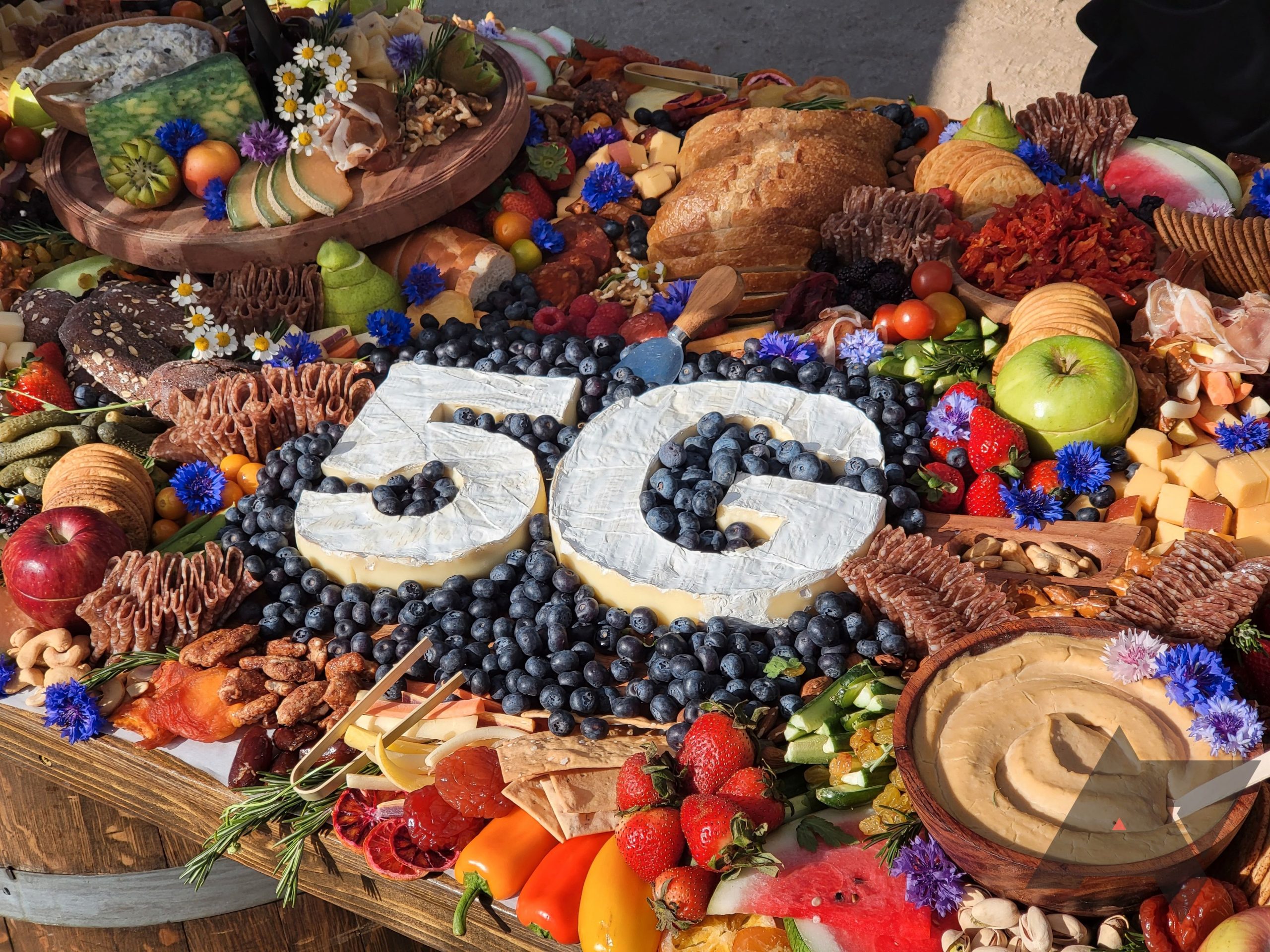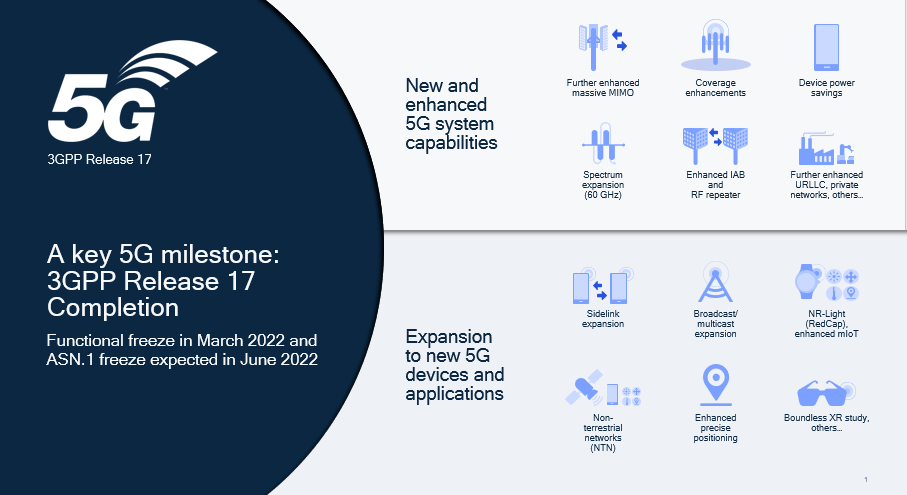Network standards don’t just “happen,” they’re the result of long years of planning, testing, and even compromises by the participants of the 3GPP: The regulatory body that develops and establishes the incrementally improving 5G standards. 3GPP Release 17 is set to be completed this year, with a handful of new 5G benefits just over the horizon. But the next version after that, Release 18, is the big one to look forward to, as the first “5G Advanced” release, with plenty of changes planned.
I had the chance to sit down and harass Qualcomm’s Juan Montojo (VP of engineering and one of Qualcomm’s 3GPP standards folk) at the company’s San Diego campus as part of the 5G “summit” it does each year. Full disclosure: Qualcomm shipped me and what seems like a hundred tech bloggers and analysts out for the three-day event. Most of it dealt with non-phone 5G applications Qualcomm really wants companies to get behind, like industrial IoT, but Montojo told us all about both the 3GPP Release 17 changes in 5G and upcoming Release 18 plans.
Release 17
The immediately upcoming 3GPP release is unique among all the numbered networking standards developed so far as the first to be developed fully remotely. Due to the pandemic, details were hashed out over video calls, online meetings, and email rather than traditional in-person meetings. As so many of us worked remotely in the last two years, so did those developing the 5G standards.
The organization that determines the standards is governed by consensus, and I’m told that participants don’t always get what they want in these group negotiations. But companies rarely stand up against specific changes — at worst, they don’t care if a certain change doesn’t apply to them. If a change is overly specific, it just won’t end up being used, even if it’s a part of the standard. I’m told that sometimes these releases encompass more than carriers actually adopt; in a way it’s a choose your own 5G adventure. Ultimately, what’s good for the gander is good for the goose, but you may not actually see every one of these features in a smartphone.
The “coolest” thing in Release 17 from a purely nerdy perspective is the overtly science-fictiony impact of establishing 5G for space: the NR NTN (or “non-terrestrial network”) standard. That means 5G-connected satellites. Don’t get too excited; your phone probably won’t be connecting to satellite-based internet, as other factors come into play. All sorts of things like the distance and type of orbit will impact performance and use cases. Montojo tells me that the practical performance is at a level that could hypothetically provide “texting” functionality, but it could also be useful for satellite-to-satellite connections later.
On that note, this release also improves so-called “sidelink” connectivity in the NR (read: 5G) standards. If you aren’t familiar with the term, it was also used in LTE networks and allows device-to-device communications. Work for this started in Release 16 for use in cars, but it’s being extended to more device types, allowing the use of an intermediary device as a relay. It will be curious to see if and how that’s used. In an in-person demonstration meant to show industrial 5G applications (which could have been more illustrative of Release 18 plans, I can’t be sure), Qualcomm showed a sidelink connection being used for location tracking of hardware inside a warehouse during obstruction. With the rise of assisted and self-driving cars loaded with sensors, the ability to share information locally could be invaluable, and will be built upon further with Release 18.
There’s also a “RedCap” (reduced capability) standard that you can think of as “5G lite” that requires fewer antennas and less spectrum to work. I’m told this was actually contentious because there were worries that a simplified 5G standard would just encourage companies to make worse products, potentially hampering interoperability and the progress of standards. But RedCap should hopefully just end up certain product categories like wearables, cameras, and IoT devices, where power savings can be particularly handy.
When it comes to a future smartphone in your own pocket, you can look forward to potentially improved battery life on Release-17-compatible modems, thanks to some efficiency improvements in idle mode — as in, when you aren’t connected and are actively searching for a signal. While mmWave’s smartphone benefits have come to be few, Release 17 also expands frequency support all the way up to 71GHz (some licensed, some unlicensed), opening up tons of additional spectrum from the prior 24.25-52.6GHz.
Other important but less easily summarized improvements include somewhat ambiguous tweaks to massive MIMO and “multi-beam” — more practically, I’m told it means improved performance and reliability in some circumstances. Other changes bring centimeter-accurate location detection via mmWave (handy in industrial applications), reduce latency, bring us closer to edge computing, extend coverage, improve power consumption, enhance multi-SIM support, and more. Release 17 isn’t objectively light on features, but it might seem that way if you’re looking even further out.
Release 18—“5G Advanced”
In the post-Release-17 future, things are a little more ambitious and nebulous. Qualcomm shared its plans but caveated all this with a few warnings: It’s not finalized, discussions are only just starting, and nothing will materialize for at least two years. In fact, the first 3GPP meeting for Release 18 only happened on May 9th, with an in-person meeting happening in June (the first since before Release 17). But a preliminary scope was decided in December of 2021, with bigger planned improvements as the first “5G advanced” release.
Release 18 is meant to deliver more significant changes to 5G as the expected “equator” or mid-point of the 5G generation. Montojo described it as “taking a break,” not to slow the pace of change, but to look further forward to see which changes could have the biggest long-term impact on the future and the coming 6G standards. That means some changes are expected for buzzword applications like VR and AR that improve the quality and latency of streams and reduce power consumption for those use cases. While each release is about looking at how things are being used to see what sorts of improvements are possible, in this case the 3GPP will have to make some forward-looking educated guesses as well.
“Full duplex MIMO” for TDD transmissions is one of the bigger and more technically interesting changes expected, and it’s pretty fascinating. If you weren’t aware of how the current transmission of data works with 5G networks, TDD is a system used for lower-frequencies where it’s impractical to use a frequency separation for separate upload and download channels. Instead, it divides things up into timed frames where download happens and upload happens — letting your phone trade roles with the tower on a regular schedule, basically. But this introduces some problems if multiple devices in the area are doing both upload and download.
This duplex system tweaks how that works by adding in a frequency division for upload and download together with another antenna at the cell site, so client devices connected to a cell can do their uploading more frequently rather than waiting for those windows — sort of a mix of FDD and TDD, in a way. I’m told interference could still be a small issue (they’re working on the technical details), but it can improve networking performance in mixed-use for all client devices and potentially improve upload latency, and I got to see a live hardware demonstration of it on Qualcomm’s HQ roof. The short version is that this should deliver better performance and potentially increased network capacity in the farthest-reaching 5G spectrum.
Improved repeater functionality is also planned for Release 18. While most repeaters just take in what they hear, amplify it, and spit it back out, Release 18 is expected to bring some “smarts” to relays to reduce interference and noise while extending range.
If you remember the “non-terrestrial” satellite applications in Release 17, Release 18 is anticipated to improve performance there as well. Montojo tells me that Release 18 could support things as advanced as “voice” on phone-type devices — in other words, you still won’t be streaming Netflix from space, but it might start to be practical for more applications.
I just find the idea of 5G in space intrinsically funny, even if there are legitimate use-cases.
Whether you see “AI” as just a marketing point or not, it’s actually delivered plenty of improvements to technology in recent years, and Release 18 is anticipated to codify some of those applications and use cases for AI and machine learning in a forward-looking way. While it’s tough to say exactly how it might be used yet, Montojo says we should anticipate general performance improvements structured in a way that should influence how the 3GPP implements AI and ML in future 5G and 6G standards.
While Release 17 expands sidelink support in a general way, Release 18 essentially drops the requirement for a host network at the endpoint. Instead of just acting as a relay, you can fully communicate device-to-device. When it comes to automotive applications (remember: Release 18 is meant to be particularly forward-looking in terms of use cases), this is also anticipated to bring car-to-car communication to unlicensed spectrum, making it easier for companies to play with and include it in their products. Carrier aggregation and beamforming for sidelink use cases might happen, but I’m told that’s currently on hold — maybe for a later release.
Again, this is just a chunk of what we can expect in Release 18. Improvements to speed and reliability via other mechanisms (better mmWave to sub-6 handoff, improved carrier aggregation) are also planned, plus tweaks for 5G-connected drones and plenty of other not-so-smartphone stuff.
So far, Qualcomm doesn’t have any chipsets or modems that it’s announced to be Release 17 compatible (and it wouldn’t give me a timeline when I asked). If history is any indicator, its 2023 flagship chip might have it.
Though product marketing names might disagree, we’ve just about reached the point of 5G ubiquity. With Release 17 now impending, we’re halfway through the generation and nearly ready to turn the corner to “5G Advanced.” In the slow lead-up to 6G, we’re still working out precisely what that new number will bring, and the smartphones you buy in the next few years with Release 17 features (and, later, Release 18) will help guide that.
Read Next
About The Author

